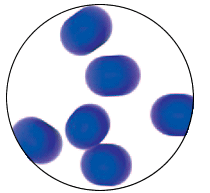Matter
Class 8
Matter :-
- Anthing that occupies space, has mass and can be perceived by our senses is called matter.
- All materials are made up of matter, and matter consists of particals such as atoms, ions or molecules.
- The tree states of matter - solid, liquid and gaseous - are based on the differences in physical properties such as mass, volume, shape, rigidity, density and arrangment of particles.
Composition of Matter:
Matter in any state is composed of small particles - molecules, atoms or ions.
Characteristics of matter :-
Volume : Matter occupies space, which is called its volume.
Mass : The quantity of matter represents its mass.
Weight : The gravitational pull on matter represents its weight..
Perceiving of matter : Matter can be perceived by - touch sight, smell etc.
Examples of matter : Living - Plants and animals. Non-living - air, water etc.
Kinetic Theory of Matter :-
The kinetic theory of matter states that all matter is composed of particles which -
1. Have intermolecular spaces between them.
2. Attract each other with a force.
3. Are in continous random motion.
Properties of Matter :-
- Anthing that occupies space, has mass and can be perceived by our senses is called matter.
- All materials are made up of matter, and matter consists of particals such as atoms, ions or molecules.
- The tree states of matter - solid, liquid and gaseous - are based on the differences in physical properties such as mass, volume, shape, rigidity, density and arrangment of particles.
Composition of Matter:
Matter in any state is composed of small particles - molecules, atoms or ions.
| Atoms | Molecules | Ions |
|---|---|---|
| An Atom - is the smallest particle of an element which can take part in a reaction & is considered the - basic unit of matter. eg. O, H, CL are atoms. | A molecule - is the smallest particle of a substance that can normally exist seperately and retain - the characteristics of the substance. eg. O2, H2, Cl2 are molecules. | An ion is any - atom or group of atoms which has a resultant charge due to -loss or gain of electrons. eg. O2-,H1+,Cl1- are ions. |
Characteristics of matter :-
Volume : Matter occupies space, which is called its volume.
Mass : The quantity of matter represents its mass.
Weight : The gravitational pull on matter represents its weight..
Perceiving of matter : Matter can be perceived by - touch sight, smell etc.
Examples of matter : Living - Plants and animals. Non-living - air, water etc.
Kinetic Theory of Matter :-
The kinetic theory of matter states that all matter is composed of particles which -
1. Have intermolecular spaces between them.
2. Attract each other with a force.
3. Are in continous random motion.
Properties of Matter :-
| PARAMETERS | SOLID STATE | LIQUID STATE | GASEOUS STATE |
|---|---|---|---|
| |  | ||
| MASS | Solids have a definite mass. | Liquids have a definite mass. | Gases have a definite mass. |
| VOLUME, SHAPE, RIGIDITY | Solids have a definite shape. They maintain their shape even when they are subjected to an external force, i.e they are rigid | Liquid do not have a fixed shape, but have a fixed volume. They take the shape of the container they are kept in. They are less rigid. | Gases neither have a definite shape nor a definite volume. They fill up the container completely. They are not rigid. |
| INTERMOLECULAR SHAPE | The spaces between the particles is very less. | The spaces between the molecules is slightly more than that of solids but still very less. They can slip and slide over each other. | The molecules are much farther apart from one another as compares to solids and liquids They have a very disorderly as compares to solids and liquids. |
| INTERMOLECULAR FORCE OF ATTRACTION | They force of attraction between molecules is very high. Thus, they are closely packed. | The force of attraction between molecules is strong enough to hold the particles together but not strong enough to hold the particles in a fixed position | The force of attraction between the particles is negligible; hence, particles of a gas move freely in all directions. |
| MOVEMENT OF MOLECULES | Solids only vibrate on their mean position. | Liquid particles are free to move around in the liquid only. They can slip and slide over each other. | Gaseous molecules move in high speeds in all directions and can exert pressure on the walls of the container. |
| DENSITY | Solids have high density. This is because the number of molecules in a solid is more and the intermolecular space is minimum. | Liquids have less density as compared to solids because the number of molecules in a liquid is less and intermolecular space is more. | Gases have least density as the number of particles is least and the intermolecular space is maximum. |
| FREE SURFACE | Solids have an inifinite number of free surfaces. | Liquid have only one upper free surface. | Gases do not have any free surface. |
| MISCIBILITY OR DIFFUSIBILITY | Solids do not diffuse with other solid particles. | Liquid may diffuse with other liquid particles. | Gaseous particles rapidly diffuse with other gaseous particles. |
| COMPRESSIBILITY | Solids cannot be compressed. | Liquids are slightly compressible. | Gases are highly compressible. |
| Some solids may change their shape when an external force is applied, but when that force is removed, they can retain their original shape. This shows that solids are elastic. | Liquids show a property called viscosity. More viscous liquids flow slowly. While less viscous liquids flow easily. | ------------------------ |
